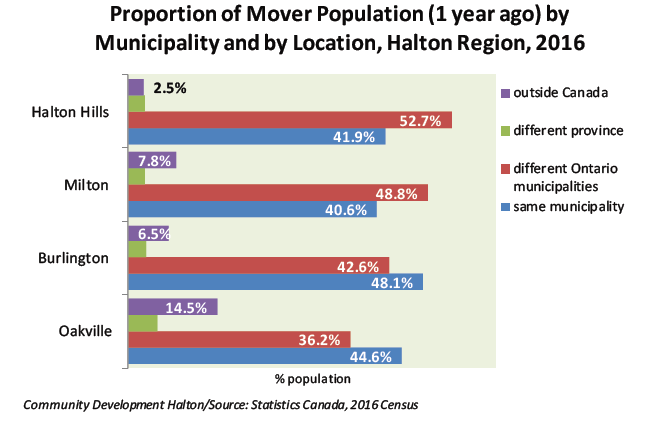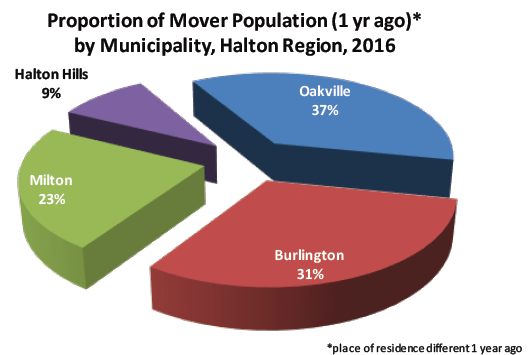 By Staff
By Staff
November 30th, 2018
BURLINGTON, ON
People move for a combination of economic and non-economic reasons (i.e. family, employment, housing, education and others). As described in a recent Canada Mortgage and Housing Corporation (CMHC) research report, on household mobility and housing choices, people who move within the same city or town are often motivated by the desire to change tenure or type of housing, improve its quality or size, shorten commuting time, obtain better access to amenities or change neighbourhoods. For those who move to a different city, province, or country, they are usually motivated by economic reasons such as employment or education opportunities.
Community Development Halton produces reports on social issues on a regular basis. Their data is used by the Region and municipal governments when they are developing programs and policies.
 According to the 2016 Census, over one in ten (11%) Halton residents changed addresses a year ago, slightly below the national average of 13%. They are the movers and total over 61,000 individuals. Although Oakville accounts for over one-third (37%) of the region’s mover population, Milton has the highest percentage (13%) of movers among its total population.
According to the 2016 Census, over one in ten (11%) Halton residents changed addresses a year ago, slightly below the national average of 13%. They are the movers and total over 61,000 individuals. Although Oakville accounts for over one-third (37%) of the region’s mover population, Milton has the highest percentage (13%) of movers among its total population.
Over 40% of the mover population moved within the same municipality. Burlington has the highest percentage at 48.1%. Over half (52.7%) of the movers in Halton Hills came from other municipalities in Ontario most likely the Greater Toronto and Hamilton Area (GTHA)2 and its surrounding region. Over 14% of those who moved in Oakville came from other countries. They are mostly immigrants.
Movers from other provinces represent the smallest mobility group, less than 4% of the mover population. The national average is about 6%.
 The CMHC research report has some interesting findings on household mobility and housing choices. The impact of household mobility on housing turnover is greater in the rental market than in the housing market.
The CMHC research report has some interesting findings on household mobility and housing choices. The impact of household mobility on housing turnover is greater in the rental market than in the housing market.
Across the nation, movers are more likely, after their move, to be renters than homeowners. Some 60% of movers resided in a rented dwelling after the move while only 40% owned their new housing.
Households moving within the same municipality have a greater impact on housing turnover than households moved in from other city, province or country. Some 7.5% of all households made a move within the same municipality, whereas only 4.7% of households moved from outside the municipality.
Movers have varied preferences for structural type of dwelling. Movers within the same municipality were most likely to move into apartments in low-rise buildings, while movers from other Ontario municipalities had a particularly strong preference for single-detached housing.
Community Lens is prepared by Community Development Halton to disseminate and interpret important community data as it becomes available.

















